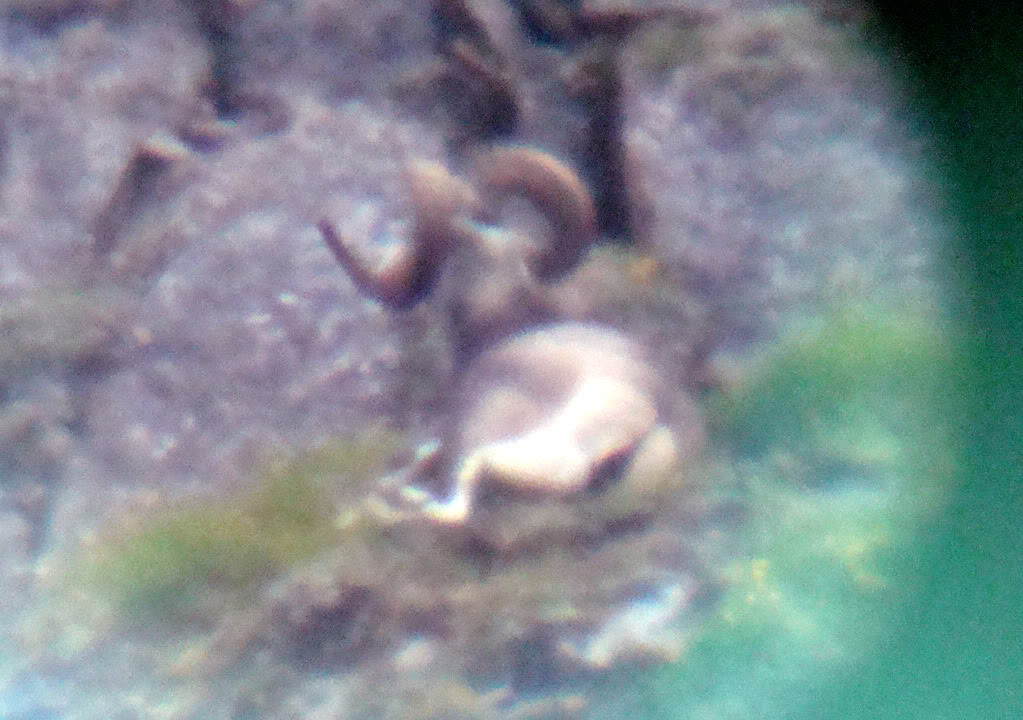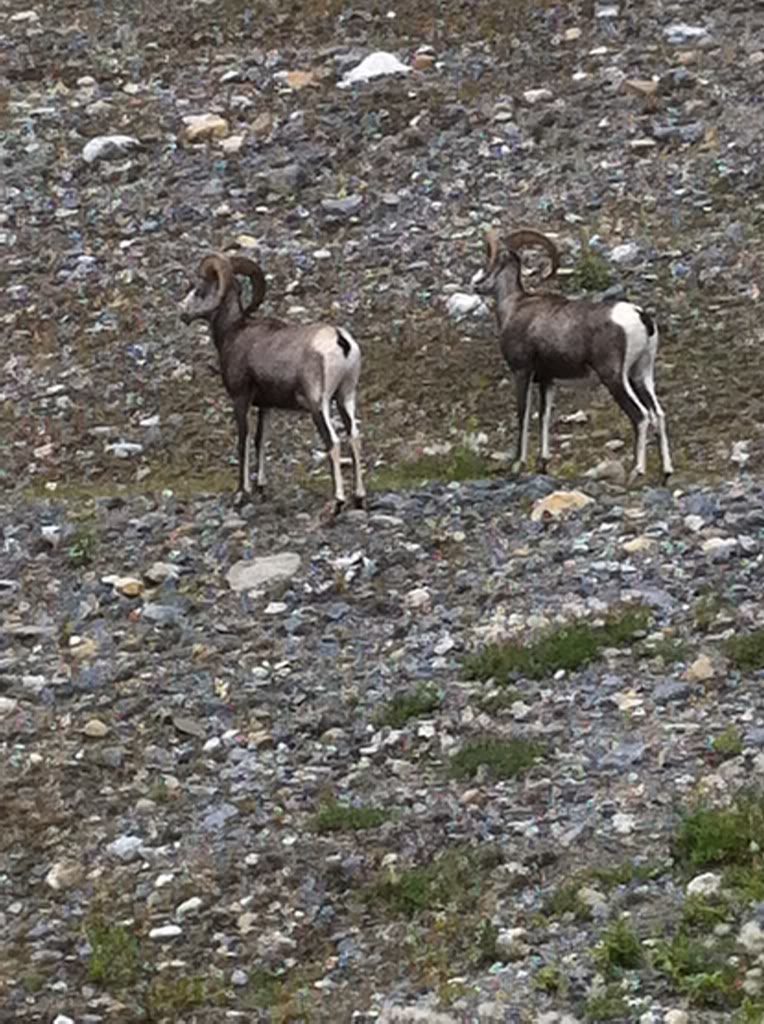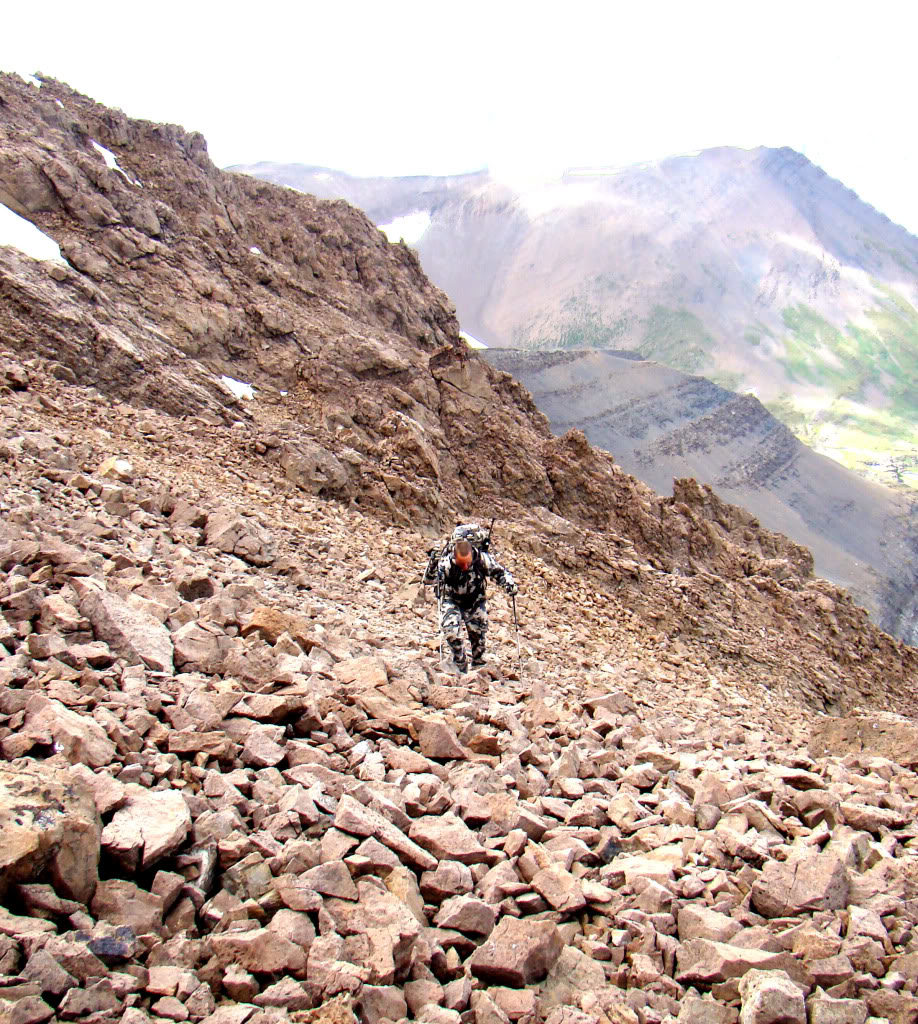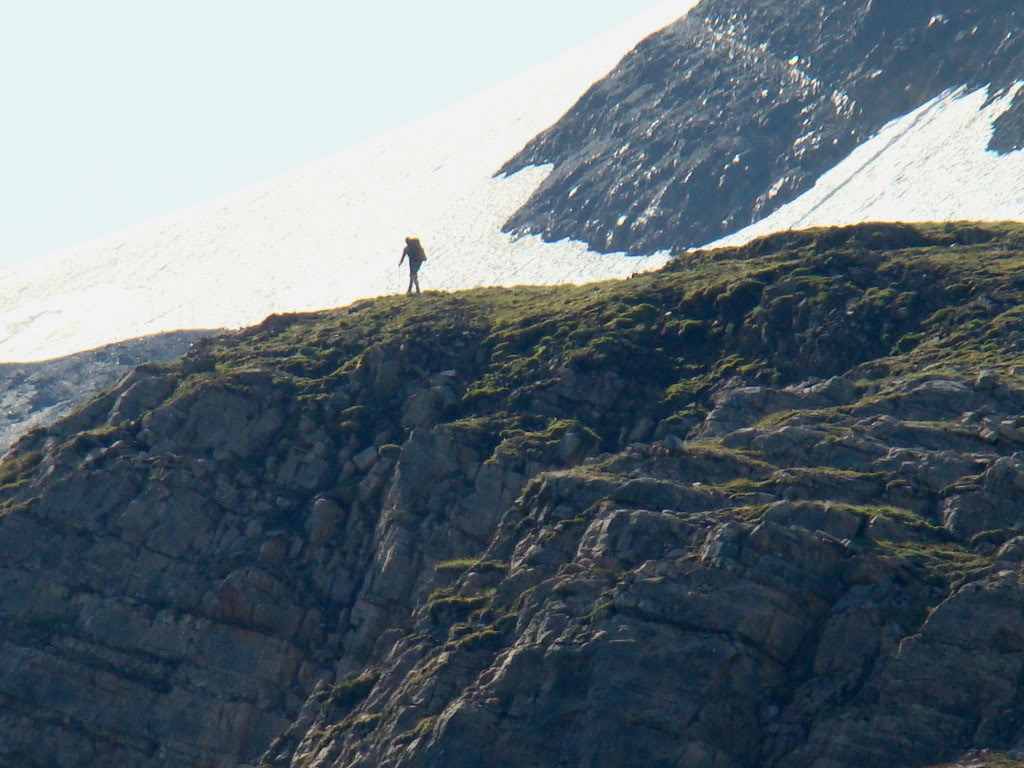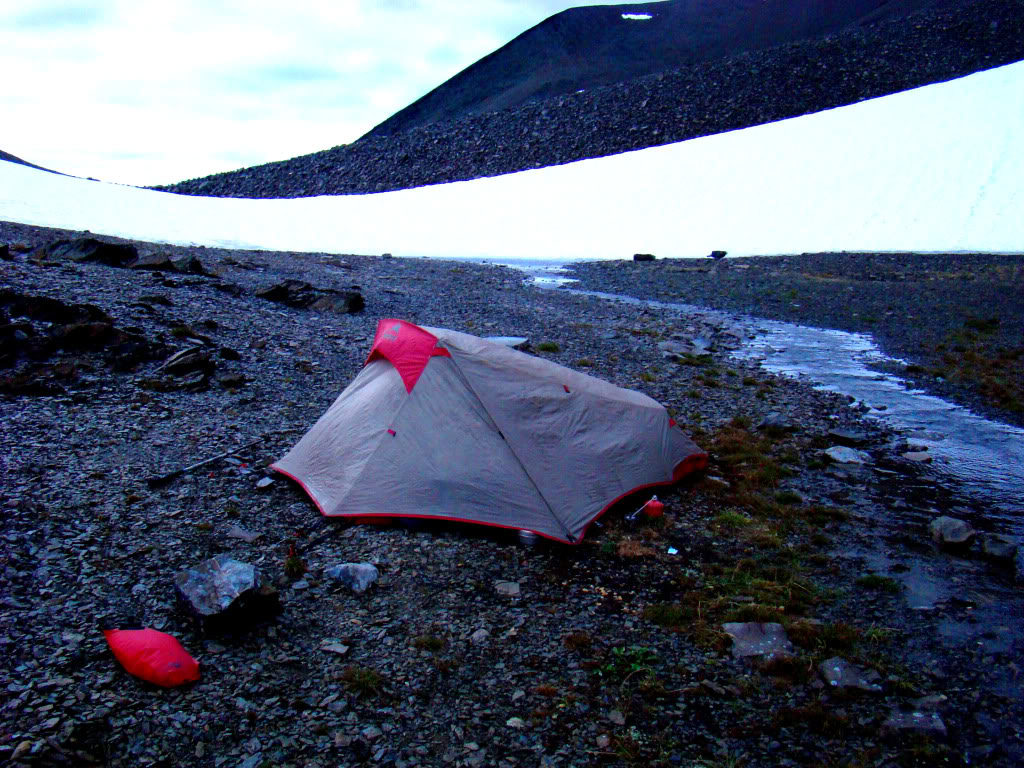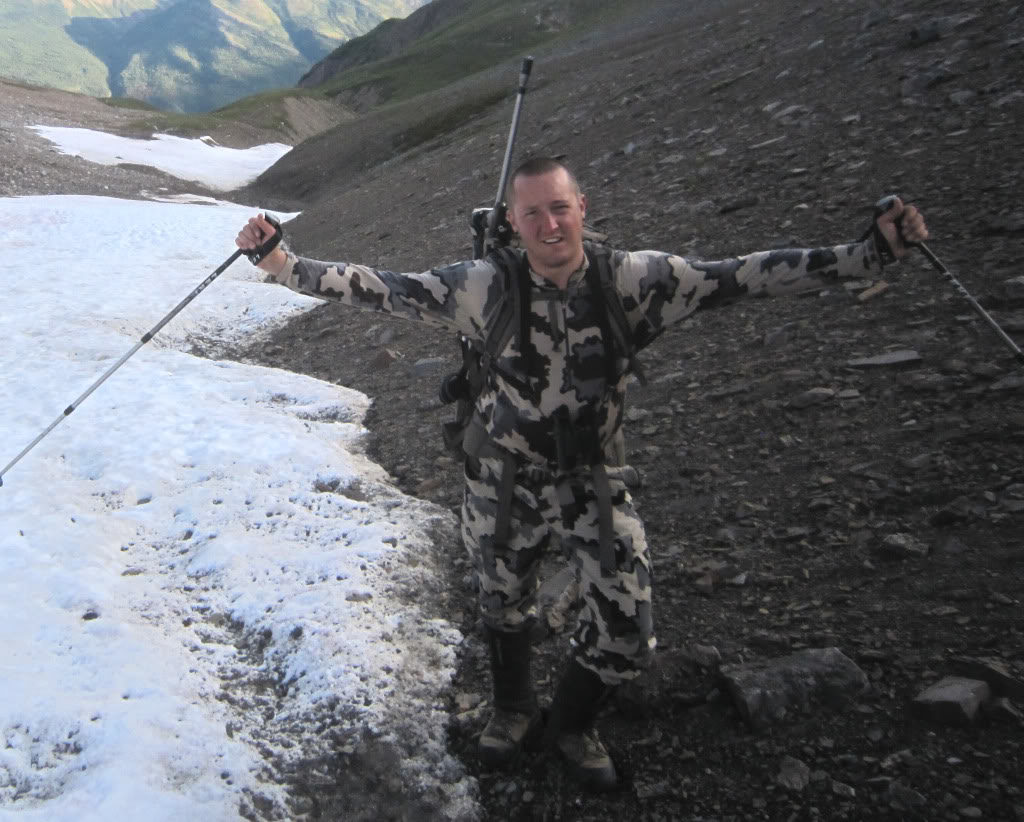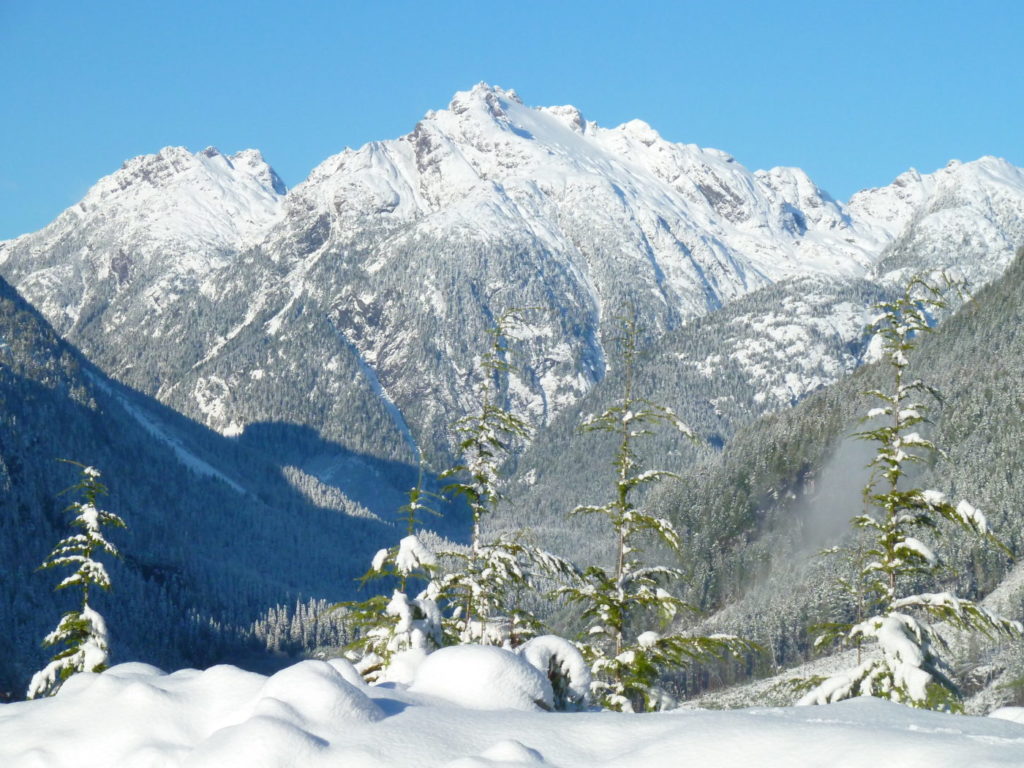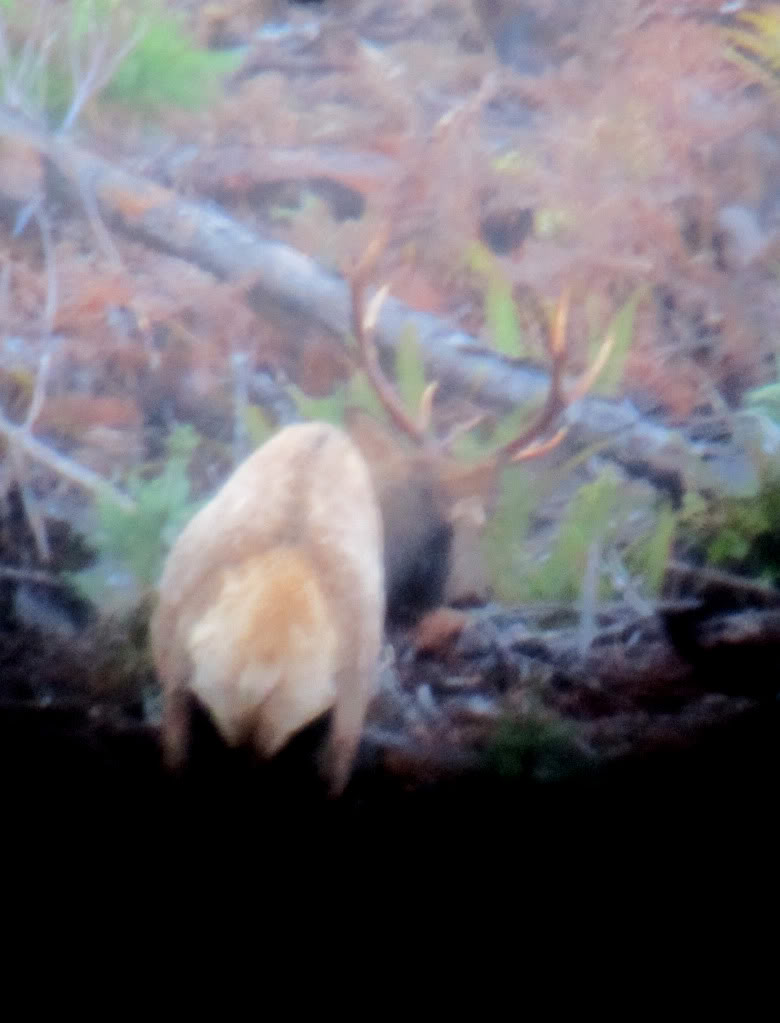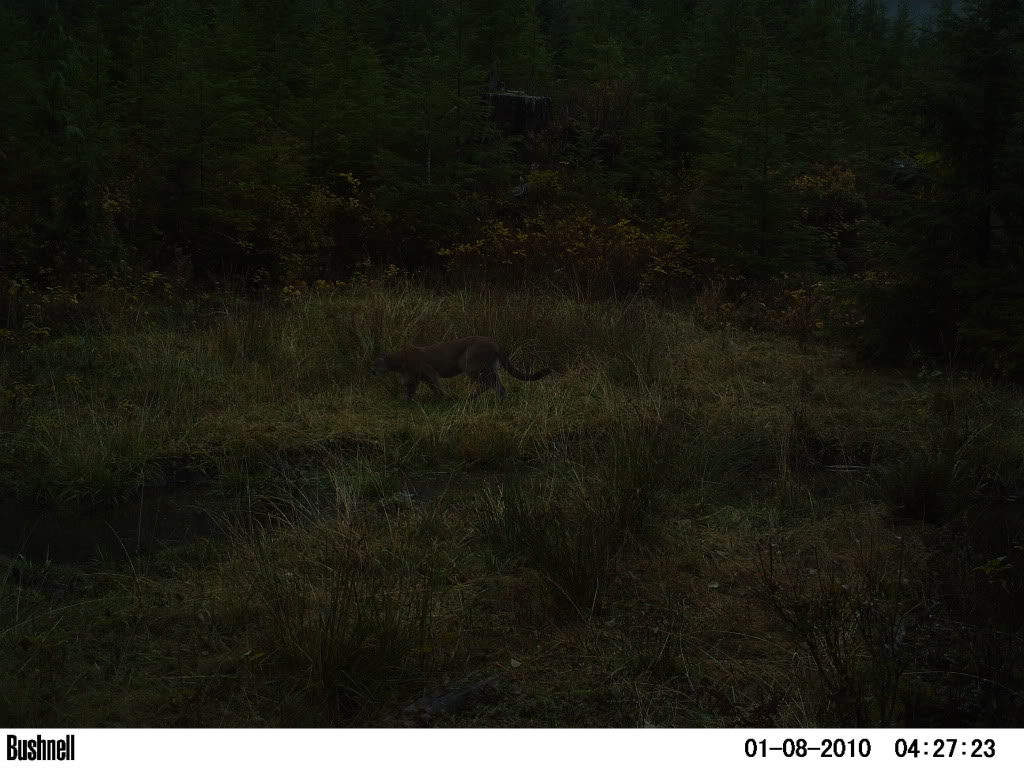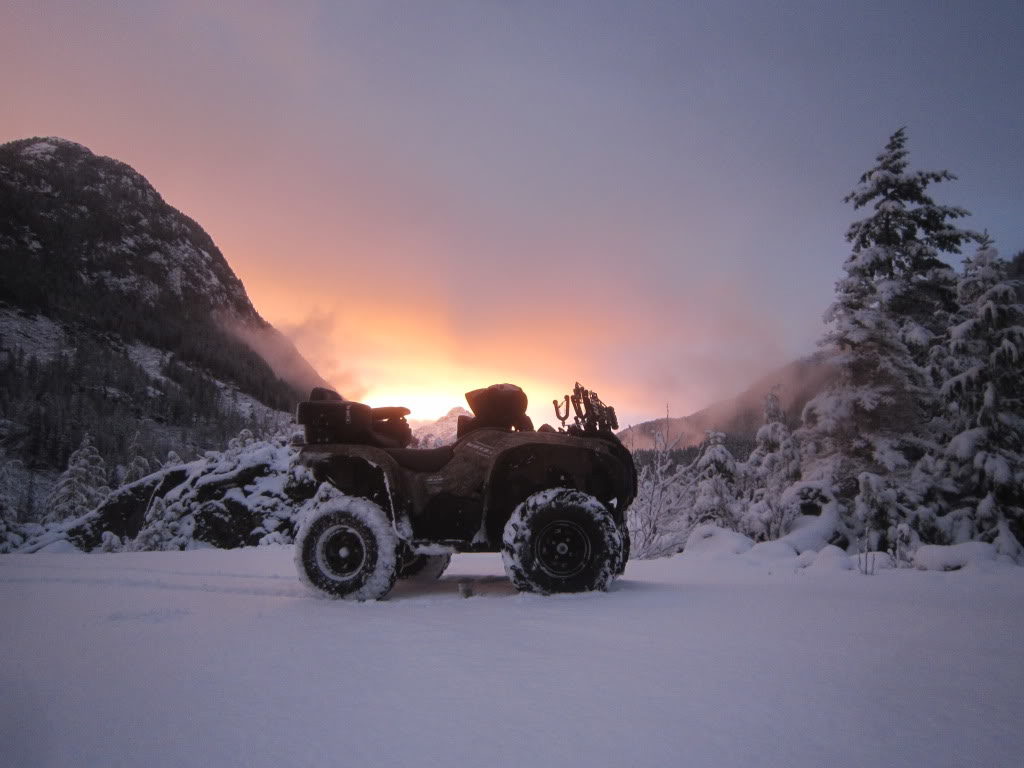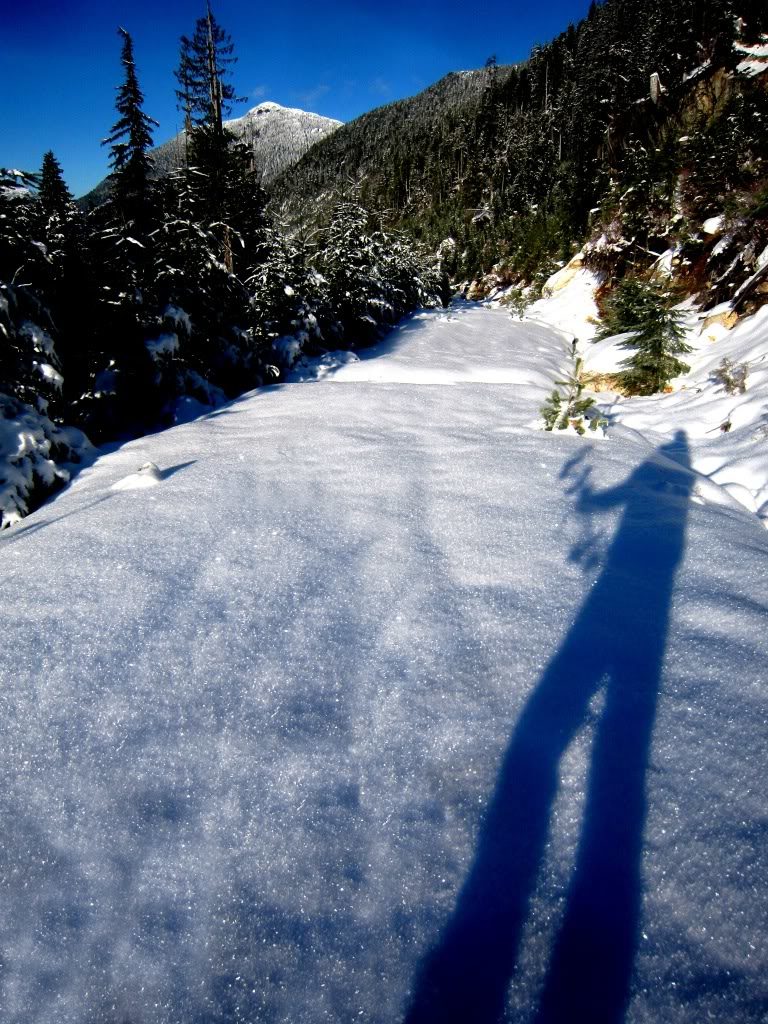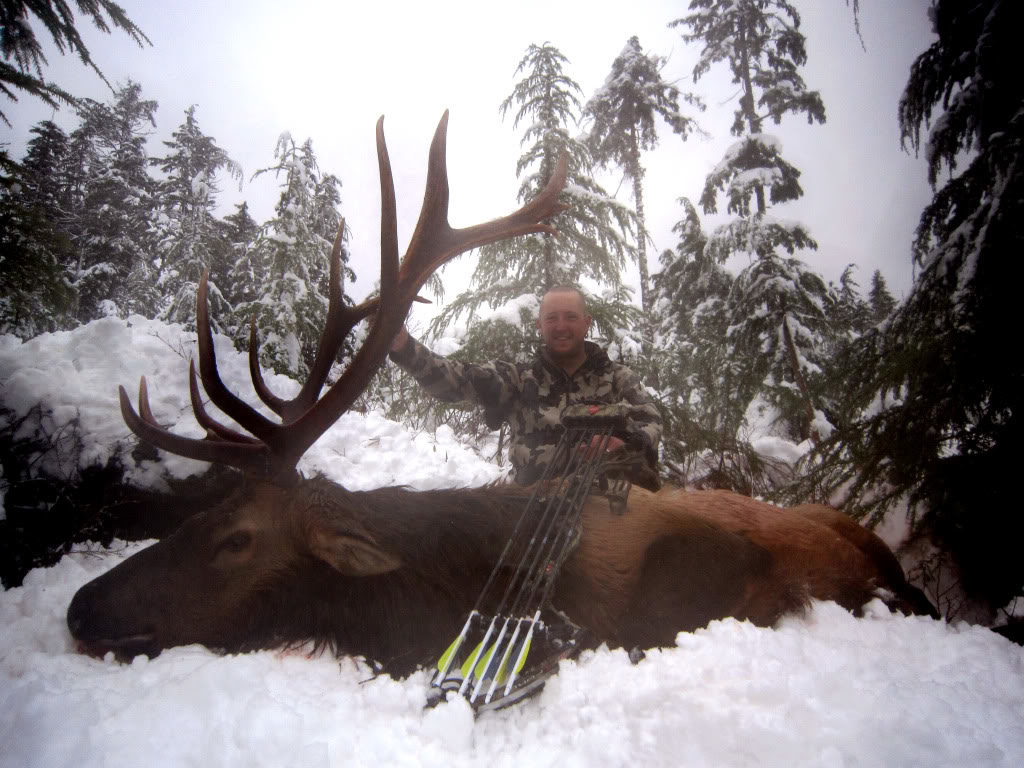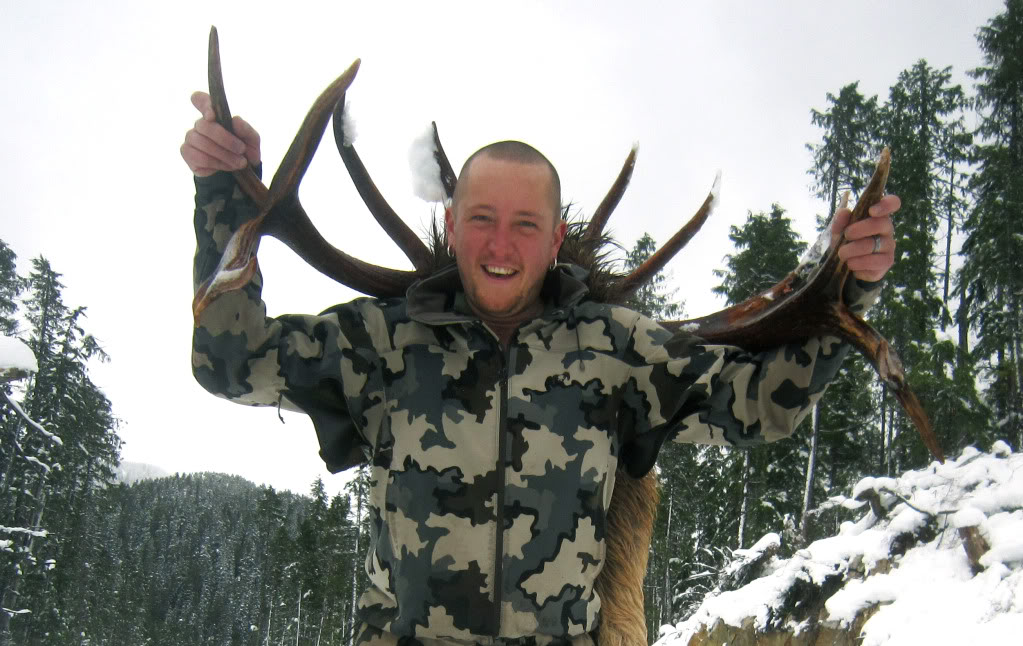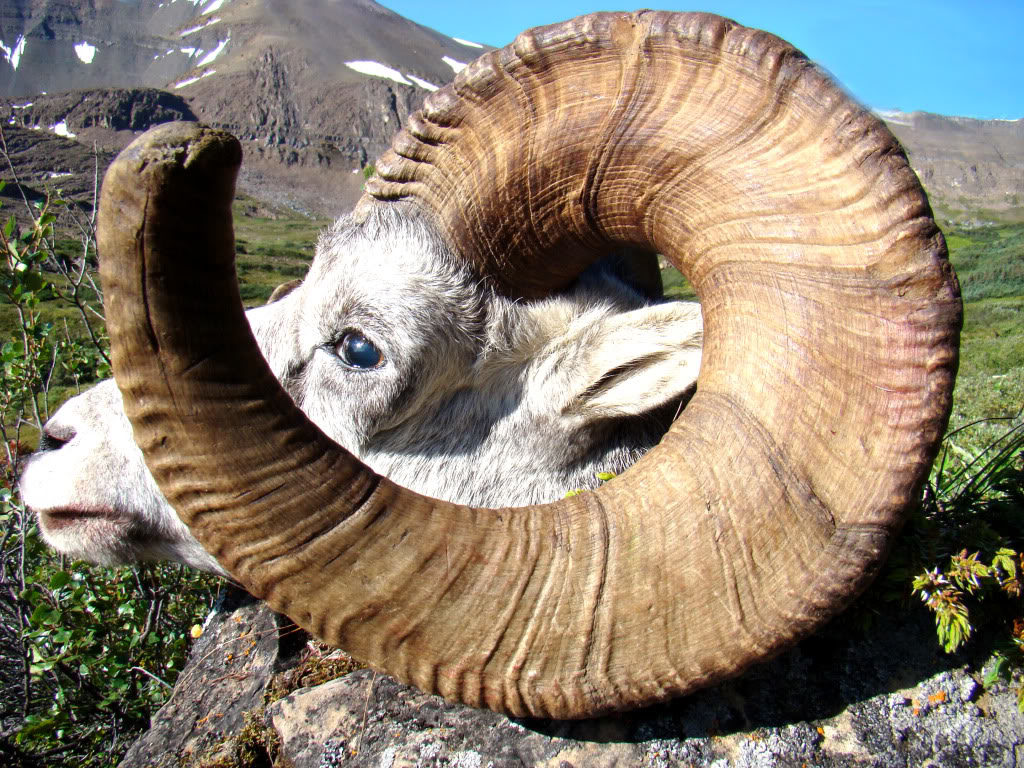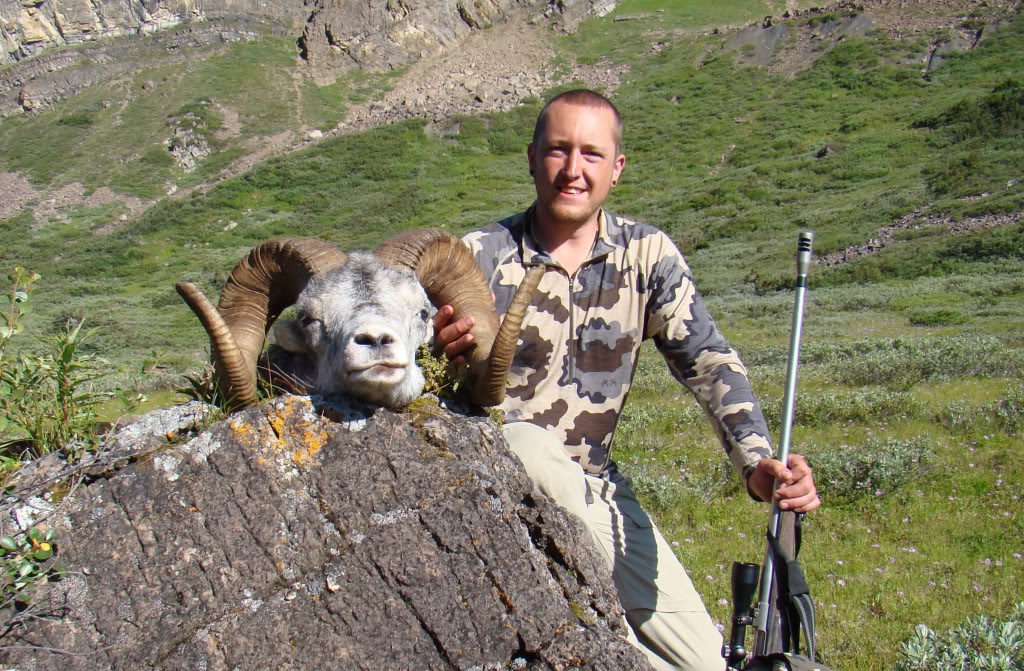Editors Note:
Alexander David Marsh, or Dave as his friends knew him, passed away suddenly and far too early on October 3rd, 2016 while on a wilderness horseback hunt in the high north of British Columbia. Dave was a devoted family man, business man and avid hunter. He leaves behind a loving wife and 6-week old daughter.
Dave was an exceptional storyteller and writer and has written for the JOMH on multiple occasions previous to this. He originally wrote this story for BC’s leading hunting forum www.huntingbc.ca in late 2011. It is to date still considered one of the best stories a member has ever submitted to the forum. In memory of Dave I made the decision to combine our usual two subscriber stories into one long, and phenomenal, final submission that will, very sadly, outlive Dave.
Dave was the sole breadwinner in his family and his daughter was only day’s shy of her one-month birthday when Dave was sorrowfully taken from us. I personally encourage you make a donation to Dave’s family in honour of a man that truly lived and breathed this lifestyle we all live for. Until the day he passed, he lived it more fully than most of us could ever dream of.
To make a donation please visit THIS LINK.
Adam Janke – Editor in Chief
I don’t come from a hunting family, but I have developed a real obsession with it. Not knowing which animal is THE best to hunt, a year ago I made a goal to try to hunt all of British Columbia’s animals before I hunt up the hunting boots. The incredibly long-winded tale that is about to ensue is only a couple of this year’s quests. But without question, the best ones. Hang on for the ride. I hope you enjoy it. I know I did!
The Disappearing Act
After a quick flight over pristine wilderness, our plane touched down in northern BC. I knew immediately we were in for a spectacular hunt. We got our base camp tent set up and were just starting to relax when I figured I would grab my spotting scope and look at some of the hills around us. Almost like magic, within less than a minute of looking, I needed to zoom in my spotting scope as I had a big set of curls in my glass. Wow! This was going to be easy! It was almost a gift: a massive, broomed Stone sheep filled my spotting scope. Standing there almost a mile away, I was impressed by this ram. I had heard sheep hunting was tough, mentally and physically; boy was everybody wrong. All I now had to do was wait until opening morning and go get this titan. However, it was July 30th, and Stone season didn’t open until the 1st of August. So I took a final mental picture of his exact location, confident he would be there in the morning, and put him to bed around 10 pm.
This hunt was taking place in beautiful, northern BC. The trip up north had been incredible by itself. On the way we saw almost every creature in the province! Wolf, grizzly and black bears, moose, caribou, deer, and even some near-curl Stones out on the highway! While on this hunt we added a wolverine and goats to the sightings list. However, there were only two animals with current seasons: sheep and wolves. I have come to realize that hunting the opener for sheep makes quite a big difference in your hunt. For one, your eyes are glued to the areas sheep are, not looking above and below for other sorts of animals; not to mention when you get a different animal you have got to deal with it, which can sometimes take days, taking your time away from finding the ram of your dreams. Also, if there is one legal ram in a given herd, you had better be the first one to find those sheep. Once it’s gone, you’re out of luck!
This would be my first time hunting the opener; I have had two other sheep tags, but both were mixed bag hunts in September, and neither hunt connected me with a sheep. As far as I concerned at that moment, I was already planning how to cook this ram and I wondered aloud if I should just cut my tag for the first of August.
I woke up at 6:20 am with great anticipation after putting the monster to bed a few short hours ago. Even before breakfast I was already filling my spotting scope with horns. Within the first two minutes of our second day, I found the two young rams that had been 200 yards from where I had last laid eyes on the giant. They were up and feeding and I watched them for hours, finding my jaw dropping due to the stunning scenery. I couldn’t wait for my first taste of sheep meat. With one ram as good as dead, we would have an easy 17 days to find a second ram. We knew these sheep were staying put so we decided to hike to a bowl just up behind us. We may as well look for a second ram for my hunting partner and good friend, also named Dave. Maybe we could get two rams opening morning and call the plane!
As we walked away, I asked Dave if it was foolish to take our eyes off of them, but we figured it was 9 am and we had a whole day to kill anyways. Plus, they didn’t seem to be going anywhere.
Taking our eyes off the sheep was a mistake I will never make again. After losing visual reference, the sheep completely disappeared in the expanse of boulders and lichen; the hunt had gone from a gimme to a gimme-that-again. We had completely lost them. We hiked to a better viewing position and got on the glass. We studied every inch of that mountain. We looked all day through two spotting scopes, and still nothing. They were gone! We had come to the conclusion that these sheep must have been related to David Copperfield. We searched from top to bottom, like an investigator on a crime scene, we covered every inch of that mountain side at full 60x zoom… nothing. Then at 6 pm, like Houdini, they just appeared, feeding in the middle of the mountain, in full view. I was not about to take my eyes off them again. I felt a huge sense of relief and my heart pounded with anticipation of the next morning. We planned a couple of different stalks, from different angles depending on the wind, and set the alarm for 3:30. They weren’t leaving that mountain. All I had to do was get up and shoot one.
As the saying goes, man plans, and God laughs. We woke up to a slight drizzle and decided to give them an extra hour in the dark. No sense in getting wet for no real reason, right? I rolled out of bed after not getting any sleep in that hour of anticipation.
Emerging from the tent full of expectation, I turned my eyes skyward, straining them to open as wide as possible, enabling me to scan through the morning mist. It was clear enough to glass, as the fog was near the peaks, so I picked up my spotting scope and returned to the spot, confident as to where they’d bedded down. Dawn was just breaking, the horizon barely visible, and as I sat motionless I could see the bedded ram. As dawn began to break what I’d thought was the ram turned into a rock. My pulse began to race. Had I lost them again? Where were they?
Three solid days of glassing later, I gave up looking at that mountain side. He was LONG GONE.
After the disappointment of losing this trophy set in, we decided to head out for a hike and check out new basins. We made slow but steady progress. Full of anticipation of what lay over the next hill, we hiked slow and steady, winded due to elevation, and then sat and scoped the side of these giant mountains we were beginning to call home. We spent more time staring through binoculars than the old man that used to live across from my girlfriend’s apartment. Unlike him, we weren’t smiling. We encountered herds of caribou that would soon be legal to hunt, but we weren’t here for them. We were here on business. Sheep hunting. No distractions, no wasted time. As time went on, I was beginning to hear the words ringing in the back of my head, “sheep hunting is hard.” We knew that reaching prime sheep locations would be the key to finishing the task at hand, so onward we trudged.
With 40-something pounds on our backs we roamed an average of four miles daily. Large amounts of time were spent glassing the rocky hills during mornings and evenings. I now understand the term, God’s country. Standing in a place on earth where nearly no one has ever set foot was awe inspiring; we had time to take in the beauty of the country. For seven days we didn’t even see one single sheep. It was mentally and physically exhausting. We had just climbed the tallest mountain around and came to a spot where we were literally trapped in the cliffs. What were we doing here?
Like the game show, we used our life-line sat phone and called our intel man back home. He assured us there were sheep here and encouraged us to keep at it. It was all the hope I needed; time to re-focus and get back at it. He also told us the area we were trying to get to was not that productive. He told us to head back to base camp and to try again in some of the productive basins nearby. One meal on the top of that mountain to refuel and we set off, back to base camp.
Fast forward to August 9th….
Dave (the other Dave) decided he would glass the “ram” mountain from base camp and I would try a different side of it, and a different bowl later in the day. I packed my gear for the day, telling Dave I would return at dark with a big ram on my back.
The sun was shining and the valley was warming up. I felt a new energy from Bill’s words of encouragement. I gained some elevation and right away spotted some ewes and lambs back on Ram Mountain. The previous evening I’d spotted a young ram on that same mountain, but lost him as he went around the south side of it. I set off to try to find him, hoping that he would lead me to his granddaddy. I found that young ram all alone. I gave it an hour to confirm my hunch and decided to move on, as he was definitely the only sheep in the area. I lightened my load with a quick meal and drank some fresh snow runoff. I ascended towards the clouds up a rocky ridge, making sure not to silhouette myself against the skyline.
I peeked over the ridge into another bowl we hadn’t checked before — it was chock full of caribou. Lots of cows and some decent bulls dotted the mountainside. It was a change of pace and I gave it some time to check out the bulls in the group. They were beautiful, and I reminded myself how lucky I was to be in such an amazing place. I searched the rest of the bowl and moved over to the other side of the ridge. I just had a good feeling about the day.
It was about 5 pm, and I slowly crept in a prone position down over the ridge to peer into the basin 900 yards below. Going head down a mountain seemed like a good idea for the first 2 minutes, though I quickly realized by the rapid onset of severe heartburn that my body was telling me otherwise. As I wiggled into in a good spotting position, I brought up the glass and found the basin empty. Bill had told me long ago that this is where we would get a ram. We had checked it once before on day three, but had approached it wrong and went in at the wrong time of day. Today was also the same; it was empty. But I pulled out my spotting scope and went to work, and using a grid pattern I came up with a lone ewe in the middle of the bowl that I hadn’t spotted with my binoculars.
Giving it some more time and scanning around the ewe, I began to put my glass on several other sheep. Ewes and a couple of small rams appeared over the next half hour. I was happy with how the day had gone and the animals I was seeing. After about an hour spent on the hillside, I started thinking I should turn and start heading back over to the other side of the ridge, as it was only a mere 50 yards away.
I decided to have another look, and suddenly a curling horn caught my attention in the midst of the herd! Wow, a real ram! He was slightly short of full curl, but man was it cool to see. My eyes were now glued to this basin. I was excited! Then another set of curls came into view! Definitely under the nose too; rats. I watched him for a little bit and suddenly a different set of curls caught my eye. This ram was heavy and broomed off! He cocked his head slightly to the side and I could see both of his heavy tips over the nose. It was GO TIME!
I crept back up to the ridge, staying low, and then started running, keeping out of sight of the basin. Along the ridge I ran about a kilometer and a half to where I could start heading down to a stream while staying out of sight. Crossing a patch of snow, I noticed caribou tracks heading right for the basin the sheep were in. I got into the three-inch deep stream and headed down through the deeply cut rocks towards the basin with the wind in my face. Only one kilometer downhill and I would pop over a small embankment and shoot my ram. As I came around a bend, my plan got interrupted. There were two caribou bedded in the snow between me and my dreams. Patience, patience, I thought. Think Dave, what do you do? Head up to my left, and get seen by the sheep; head up to my right into shale and noisy rocks and probably spook the caribou anyways.
I devised another plan. I had heard that caribou sometimes come to a waving white flag. They are curious and maybe it would work. I grabbed a game bag and tied it to one of my hiking poles. I waved and waved, in full view for a good 15 minutes. They didn’t see me. I wasn’t even 200 yards from them. I tried my best caribou call. I have no idea what one sounds like, so I just made some stupid grunting noises. With the wind in my face they couldn’t hear me. I couldn’t think of anything better, so I just started walking ever-so-slowly toward them. Then my plan fell apart. They started trotting with tails up right at where the sheep were last seen an hour ago. What now? As they disappeared out of sight, I ran like a ninja, sliding through the snow, almost skiing at times to try to keep up to them. I got under them, and luckily they turned back up the side of the mountain and started feeding away from me.
With the wind in my face, everything seemed perfect. I got to the sheep-filled bowl, climbed up the 30-foot embankment, and peered over the edge through the long grass, into the basin. I found him with my spotting scope and ranged him at 450 yards. Not what I wanted. And with ten steps, he disappeared over the next ridge into a box canyon above him. However, there were still some sheep between us. Then the wind changed and started blowing right towards the herd of sheep. I needed to think fast.
I had to move. I couldn’t go towards them; I had only one choice, back up the creek and over a monstrous shale/rock mountain to get beside or above the new bowl they were in. It was about 8 pm and the wind would be changing soon. If I could climb this mountain, I would get above them right around the time the wind would switch. But I was out of options, and I was losing light, with the sun already behind the mountain.
I dropped my fifty-pound pack and took only the things I would need. Spotting scope, video camera, and for the first time of the year, my rifle: a .300 Winchester Magnum built by Sako. My clip was loaded but I forgot the rest of my bullets. Halfway up I remembered, but there was no turning back. I had 4 shots. As I got to the halfway point, I decided I would try to go around the side and try to look in. I got part of the way around and heard falling rocks in the cliffs opposite me. I looked and I was in full view of three ewes. I didn’t want to, but I had no choice but to back out and go higher. My legs were burning from the two-and-a-half hours I had been pursuing these curls. By the time I got to the top, most of the daylight was burnt. Because it had taken so long, I had my doubts that the rams would still be there.
I started crab-crawling on my butt, with my gun balanced over my lap, down the noisiest, china-like shale, towards where I had last seen the sheep. I was continually checking with my binoculars and finally spotted a sheep below me! I kept going to get to a small ridge, and as I peeked over, I saw one of the three big rams. I found my ram and got ready, lying prone, facing downhill. The wind was as I expected, blowing downhill, right at them. I mentally prepared and told myself, “No mistakes.” I have never had buck fever before, but told myself to be aware I might get it on this hunt. I calmed my nerves and lined him up. I waited for him to feed broadside. Five minutes seemed like forever as I waited. He was heading out of sight, right below me again…
Cherry Red Daggers
I still remember my first glimpse of a Rosie. As we turned the corner on the dirt road, a huge white beast with massive maroon antlers raced up and across the road in front of us. Three 20-something year old guys who had never seen a Roosevelt elk before came to a sliding halt in the truck. We were flabbergasted at the size of the behemoth with those impressive antlers that had just appeared and, like magic, disappeared into a thick tangle of trees.
On my quest to experience all of BC’s big game and really find which hunt I liked best, I put in for a Roosevelt elk draw this spring. I can never seem to wait for the results to come online, let alone in the mail, so at 9:30 am one beautiful June morning I called the LEH office, knowing the draw had been run. Sheep, elk, and bison, are always ridiculously high odds and I really didn’t ever think I would win one of those. I gave him my hunter number and he told me I had gotten 3 draws. A moose, a goat, and almost in slow motion I heard him say, “You got an elk too!” My heart raced like a school girl at a Bieber concert (apparently). This was way better than Christmas. Immediately I went to work on the planning.
Having never in my life thought I would get an elk draw, I’d never scouted the area before applying for the tag. In fact, I had never even seen the area, though I have hunted nearby for black bears and deer. Instantly I grabbed my map book and looked at the area I was heading for. Seemed like good access, I wouldn’t have to rent a boat, and I would have to get over there and scout right away, to try to learn the habits of an animal I have never pursued. I really started digging; phone calls, emails and many private messages on forums to people who had hunted these creatures before. I definitely got a lot of great responses, and had a lot of great information on the area, but I had to get over there and see it for myself.
In July I made my way over from the mainland for the first time. We spent a couple days trying to soak in the place and see for myself if I could find elk. Soak in I did, as it always seemed to be raining. Even in July. We did find a herd of cows one day though, and a nice looking black-tailed deer still in velvet. At least I knew there were some elk there. What I did discover was just how thick and lush the place really is.
Having never killed an elk before, I figured some books were a good idea. I started to read anything I could get my hands on in figuring out what the animals do. Of course that bull I had seen three years ago ran across my mind from time to time, and I dreamt of not only taking a bull, but of taking a MASSIVE bull worth putting on the wall.
As I have gotten into hunting, I have used all kinds of methods to hunt. This one would be done with stick and string. Actually a carbon fiber stick, and a few strings rigged up to be pushing that stick at 320 fps. After using it to hunt water buffalo in South America this past spring, I rededicated myself to the art. I put in a lot of time practicing and tuning this muscle car of archery equipment to make sure I would hit my mark when the opportunity came along. I flung hundreds of arrows per week, and I really honed my skills at some distance, even over 100 yards, to make sure I could hit my target when push came to shove. Of course there is an ethical limit to shoot an animal. At 100 yards it will take that arrow almost a second to reach its mark, and in one second, a whole lot can go wrong.
I connected on the internet with a fellow drawn for the same area a month earlier than myself. I went to help him out in any way I could, as I would be there scouting for my draw. Hopefully he would have some insight for me as well. He was an expert Rocky Mountain elk hunter who was also on his first Roosevelt hunt, and he really knew the animal’s behaviors. Going over there to hunt with him was a huge advantage. He had spent some time now hunting his tag and had really figured out their locations and habits. This man was pure inspiration. Not two weeks prior, he had gotten off of crutches after spending months in a wheelchair from a serious snowmobile accident. Skirting death, he had broken his back, and he said winning that draw for elk gave him the motivation to get back on his feet and make his elk hunt happen. Elk hunting was a huge passion of his. And, he would be doing it alone. Near the end of his draw he did get his elk. I was thankful for the entire experience including helping him with the pack out. It was all great preparation for what I was about to embark upon.
The days flashed by again until it was the day before the opener. I had made it to camp — and a luxurious camp it was — with hot showers, electricity, and running water in my trailer. After setting up I shot a few arrows to make sure nothing had shifted or bumped on the long trek to get there. Things were perfect. In the morning I would find my elk and kill it. Just then the heavens opened up and the rain started to fall.
I woke up to the sound of rain on opening morning. I sprung out of bed and threw on my rain gear, grabbed my pack, and fired up the truck. It was go time. One thing I hadn’t really figured out was how to hunt on the rainy days. Glassing is definitely the name of the game in this hunt: get some elevation and spend time behind optics. But it was… wet. Everything was wet. Clouds were everywhere, or fog, and you couldn’t see 200 yards at most times. Binoculars would fog up and have water droplets plaguing them constantly. The tissue paper I kept in my pocket to dry the eyepieces was soaked by noon. I was forced at times to sit and wait for clouds to move. As I sat and glassed that first afternoon from where we got the elk the month before, I suddenly caught a glimpse of what I had come for. There were those unmistakable maroon antlers, flashing glossy rain from over three kilometers away. I threw up the spotting scope and saw what looked to be a nice rack.
Using Google Maps in my iPhone, I marked his exact location in the cut block and found the old overgrown road that led up to the slash where he was with three other cows. I remembered then a fellow at the camp where I was staying telling me to try and get above them and come down. So after getting drenched running through the alder-overgrown road, I got to the edge of the cut block. Keeping in the shadows of the old growth timber, I climbed to just above their position. When I caught sight of them I got low and headed straight at them, staying out of sight, and tried to be as quiet as possible in a very wet and slippery cut block. The cut blocks back on the mainland are like manicured lawns in comparison to this jungle gym of downed timber. I had to try to step on the wood so as to not make noise, but the stuff is so slippery, I found myself needing to use all four limbs to stay upright. One thing that did help is all of the running water –it really covered the noise.
It was about 3 pm and I had all the time in the world, though the wind was now angling toward them. I got to my last point of cover, not knowing how close I was. Drifting in the air was a distinct musky odor of my quarry. I knocked an arrow and eased over a rock. There, at less than ten yards, was a bedded cow, looking downhill. I slowly retreated and went up a rock higher. Looking over it I caught sight of those cherry-red antlers, not 25 yards away. I watched and watched, wondering what to do. It was a 4×4 rack. Do I take the bull and run? No more rain; home in my bed after an already long season. He didn’t smell extraordinarily tasty, but I had heard he would be. It wasn’t a long decision. I shot him.
I shot him with my camera and green-peaced him. Still, it was a huge rush! Plus, now I knew what was possible.
I spotted many more herds of cows and young bulls; however, I didn’t even stalk them. I looked them over, checking for big bulls, and then moved on. I would see an average of two herds a day. Most groups averaged 8-12 cows and the occasional young bull. I wanted to hold out for at least a 5×5 antlered bull. That would be the smallest I would shoot at this point in the hunt. A 5×5 with a bow would have a good place on my wall.
Around day five of the hunt, I found a different herd that had four bulls and nine cows. One of the bulls made my eyes a little bigger, so I grabbed my spotting scope and zoomed in on him. Much to my delight he met my mark, with five solid points on each side.
I checked the wind and set up a stalk. Driving like a maniac to try and figure out how to get my truck down into that cut block, I raced up and down the road. However, each way in was blocked with massive cutaways in the deactivated road. Not one month ago there was a truck in there, I was sure of it. But in that time the road had been closed. I would have to hike down roughly 700 yards through a brutal cut block to reach them. Using a water-falling creek, I slipped down to just above them. The wind was not good, but this was my only way into this block without being spotted by the herd. I figured if I could get to a certain log pile I would have a 50-60 yard shot. Then just pop up and my hunt would be done.
I rose above the log pile with my arrow nocked…they were not where they were supposed to be. They had dropped over the bank and down, nearer to the cows. I got to the landing they had vacated and slipped off my rubber boots and my rain pants. I was going to be close. I eased over the embankment and got into position behind a small pile of logs.
Lifting the range finder, I found them at 75 yards downhill. Easy-ish shot to make given all my practice to date. I practice regularly at 70 yards and I group under seven inches. This would not be a chip shot, but it was definitely doable. I watched the four bulls as they locked horns and pushed each other around. As the two sets of bulls sparred with each other I had difficulty telling which one was the five-point through the tangle of horns. Watching the bull spar was a treat in itself. I was almost mesmerized, as if watching Lorne Green’s New Wilderness in the 80’s. He was definitely the biggest of the four. He was perfectly broadside. It was his time.
Then, from the corner of my eye, I caught movement at 30 yards. A black-tailed doe had come out of thin air and had me pegged. Five seconds later the doe caught my wind and bolted. The herd wasn’t one second behind her. Then they stopped with noses in the air at 140 yards, looking for the cause of this problem. I froze, and for two minutes I did nothing. Then, one by one, they filed out, trotting slowly away from me, along with my hopes and dreams.
The hard part about this hunt wasn’t finding elk. It’s finding big elk! I had four trail cameras set up from the month before, and had caught on it all kinds of cool things: from grey and jet black wolves, to cougars, black-tailed deer, and black bears with cubs. The one thing that gave me hope though was a nice 5×7 dark-horned bull. Many a morning I didn’t feel like getting out of the warm bed and into the wet wilds of Vancouver Island, but I did. I slept in a couple mornings just to break up a hunt of this length. Day after day can make it hard to keep motivated sometimes. Being in that kind of cold, sleety, wet rain is brutal. Walking in the thick second-growth timber, peeling ferns and salal from around you to keep quiet, is a whole different puddle of H2O. It’s no wonder they call it a rain forest. That’s the perfect way to describe it. It was relentless, with plenty of snow storms and sleet to make sure you were uncomfortable. But that big 5×7 bull kept me motivated.
I did have a few people tell me I was crazy for not taking a smaller bull when I could have. I replied that I would be crazy to not hold out in the situation I was in. This wasn’t a weekend hunt. This was a once-in-a-lifetime draw, and I had everything right there at my disposal for the full pull. I had to give it my best.
I was encouraged to meet and talk with the other hunters with the tag: a father helping his son. They also saw lots of elk and even turned some down at the beginning of their nine-day hunt. Al was a very serious hunter like myself. It was good to see someone win it that would really put a good effort in. He had also won a sheep permit this year and had come very close to completing that. He had taken a couple elk in the past and so he really knew what he was doing. I would meet up with them every few days, and we would encourage each other with what we had seen and what we were learning from the hunt.
Around day ten I was nearing the top of the mountains on my quad. It was snowing heavily and I couldn’t see 100 yards ahead of me. I figured I knew where the herds were down low, but a friend of mine who I had been corresponding with during the hunt had told me to look higher up in the hills. The big bulls would be separate now, and would be way up top forming bachelor groups.
With no goggles, I was moving slowly on the quad. I looked up by pure chance and there at 70 yards was a nice lone bull. Surprised, I shut down the quad and grabbed my bow. He didn’t even wait for two seconds before he disappeared into the second growth timber. I would have to track him down — that I did. It took two hours. I don’t know how I out-walked an elk, but he hadn’t even stopped once. I caught sight of him going up the slope opposite of the creek I was dropping into.
Too many trees were in the way and he wasn’t stopping. I couldn’t even get a great look at the antlers. He was big, and this had been my first real chance. I soon gave up as it was getting dark, as he was dropping elevation like mad. I pointed my iPhone to the place I had left the quad, and my two-hour walk in was a straight-line thirty-minute walk out in the almost dark. On the way back down the mountain, I cut his track crossing the road and noted the block he was going into. I would have to try for him in the morning.
That next morning I woke up to — you guessed it — rain! It would be snow farther up the mountain. I had to get back onto his track and check that block. Six kilometers away I cut a frozen track of a lone bull from the night before heading down hill. Not even really thinking this would be the same bull, I followed that track three quarters of the way up the mountain before deciding this WAS likely the same bull. Back down I raced. I found his last direction and turned onto a road that he should have crossed.
Going up the mountain his tracks got fresh. But then I noticed a tire track that was also really fresh. There was some logging going on up this hill so I just hoped that’s who it might be rather another hunter. Alas, turning a bend about three kilometers up the road, I saw the other hunter’s truck pulled over with one head in the passenger seat. He rolled down the window and told me his son (Al) was stalking a good bull they had just tracked down and found bedded. The only thing I could do was turn around. So I headed back to the area he had been the night before and set up on his trail thinking that he might head back that way, if this hunter didn’t connect. After sitting there in the cold for two hours, I gave it up.
That afternoon I went way back and way up high. I found another group of ten or so with a few medium bulls in it. At this point my trigger finger was getting rather itchy. The wetness really takes its toll on you mentally. I almost made a play on these bulls, but settled on giving it a couple more days.
After talking to some other (deer) hunters for about half an hour, I got a kick out of hearing one of them say, “See Doug, I told you we should have brought binoculars, that’s SUCH a good idea!”
Sunday morning, I slept in, just to give myself some refreshment and rejuvenation. The nine days had come and gone and the father and son team were leaving empty-handed. I had grown to like them and even had them by for dinner one night. When they weren’t sure if they would be able to make it back to hunt again, I asked them for the last direction that big bull had headed. We parted ways and I headed up to the last place he was known to be. With about six inches of snow, I thought maybe I would cut his track and find him bedded or out feeding in a cut block. Needle in a haystack, I just kept thinking to myself. This is BIG country.
I got to a high position to look over many kilometers of cut blocks and do some glassing. I hadn’t cut his track on the way up. He was probably long gone I thought to myself. About 30 minutes later, I lowered my binoculars. As I lowered them I just happened to glass through some thick second-growth timber. Through the trees there was a small rock bluff, and bedded just below it was a massive bull elk.
I worked quickly, grabbing my spotting scope and centering it on him. He looked alone, and he had big antlers. That was all I needed to know. He must be a good one. Now how to get to him? He was in the middle of the timber, on a slight ridge, bedded just below a mound of rock, with a cliff on his far side. If I could get to that cliff and get up it I would have a shot on him at no more than 40 yards, and the wind was blowing steadily in the right direction.
I slowly made my way into the timber, trying to be as quiet as possible. The salal was covered in 2 inches of fresh wet snow that slopped off with each step I took. Lifting twigs and branches out of the way, I made my way down and behind where I thought he would be. The forest was alive with the sound of wet snow dropping from branches all around me. After close to an hour’s stalk, I looked over the first knob; I was unsure if this was the right spot, and it turned out not to be. Then I saw what I thought might be the cliff just up the ridge from me. The rock face was about seven feet high and straight up. I put my bow up on it and used a tree branch as a foot hold. I ever-so-quietly dug my fingers into the snow and climbed up.
As I peeked over the edge, my heart almost exploded as I saw what I had hunted so hard for. There, not 25 yards away, was a gorgeous set of deep maroon and ivory-tipped antlers. I eased up and very slowly crept five yards to the next rock in front of me to where I thought I would have a good shot at the bedded bull. Each knee-step forward I took in the six inches of snow seemed to make the noisiest compacting sound I had ever heard. There I was, kneeling, with my arrow nocked; wind in my face, bull bedded facing away, a mere twenty yards distant. This was one of the most challenging stalks of my life. I could see his heavy antlers heaving with each breath he took. His ears were pinned straight back in my direction. I rested my bow arm and breathed deeply, calming myself. After what seemed like an eternity, but was probably closer to a minute, I saw the falling snow swirl ever so slightly towards the bull. On command he rose to his feet.
Kneeling, I drew my bow and put my 20-yard pin on his chest. He looked me in the eye and I squeezed the trigger on my release, sending 400 grains of displeasure into his chest.
Like a heroin junky as the needle plunges, I felt a rush of adrenalin that really can’t be put into words. I was more than excited. I was breathless and shuddering, frozen in a moment of absolute achievement. I had just shot a giant bull elk with my bow. The shot felt perfect; I picked my spot, I hit my spot. I felt like I was on top of the world. And for a minute I was.
That all came to a screeching halt as I found my arrow 25 yards away. Caked in blood, I lifted it to my nose to smell the unmistakable smell of gut. My heart plummeted like a skydiver without a parachute. `When in doubt, back out,’ rang through my mind. And I did just that. It will be dark in two hours, so why not just give it four, I thought to myself. There was good blood covering the arrow. But I didn’t need to make any mistakes at this point. I headed out to camp for dinner, dragging my feet in the snow so I would be able to find my way back.
Dinner was great. The caretakers of the place we were camping at had made us a feast of salmon that night, but I could barely eat. I was so worried about my elk, and getting it out in the dark. I even phoned a good friend back home as he said he would be willing to come and help me out if I thought I needed it. He canceled his appointments and headed towards the ferry. That is a good hunting partner right there. He reassured me it would be dead and we would have no trouble packing it out that night or early in the morning. Thirty minutes later I called him back to tell him not to come. It was my mess and a long way for him to come. He turned his truck around near Burnaby after receiving my phone call and headed back home.
We finished dinner and our incredibly generous host volunteered to help me go find my bull in the dark. Back we went, five hours after the shot. We found my tracks, which were already snowed in, and followed them up to the site of the shot. Instantly we were on good blood. We followed his tracks slowly, shouting, “Hey, bear!” on the way in, as there is an incredibly large population of black bears in the area. At 70 yards of easy tracking with lots of blood we found his bed. There was no snow in it but it hadn’t hit me yet. We followed on further until we came to a white strip of snow. Shining my light ahead, I saw the snow-covered road and the tire tracks our quad had just made. Then I connected the dots. We weren’t following a dead bull.
We once again backed out, until first light. In a situation like this, you sleep about as good as a first-time mother with a sick baby.
I don’t know how I managed to sleep, but at dark again I was on the quad with my incredibly helpful caretaker friend and my wife in the truck. There was some snow in the camp site. As we climbed the mountain the night’s snow got deeper and deeper. At the top where the bull was, there was over a foot of wet, heavy snow. The quad with the differential locked in barely made it up the hills. At times my friend had to sit on the front rack to give it enough traction.
The elk tracks would be gone due to the heavy snow. So we made our way up and above the cut block that he had last headed into. Maybe his tracks would be on the road above. Hopefully we could glass down and see him lying dead in the cut block. But an hour later we had nothing. I guessed he was heading for a small thicket with twenty-foot cedars, about 100 yards into the cut block.
The cut blocks are so deceivingly hard to walk through. One minute you’re on top of the snow, the next you are nipples-deep in it, with your feet wet in a creek. You just can’t tell where to step and where not to step. We searched for three long hours. It was tough going. But I wasn’t one to give up that easily. I finally decided we should head back to where he walked into the cut block and see what the easiest line for him to go would be.
About five steps into the block, my wife, Cory, trailing me, saw that I had kicked up some blood almost a foot under the surface of the snow. “Keep kicking and digging,” I told them. “Here’s more! Over here, found some more!” With my heart racing I pushed on, kicking down in the snow and digging with my hands! I couldn’t believe this was actually working. He had originally headed for the small stand of trees but then had veered off. Seventy yards later I came around a bushy cedar and let out the loudest Rick Flair “Woooooooooo!” you could have ever heard. The other two lit up in yells as well. Then, out of the corner of my eye, I saw its head turn to look at me.
Back to the quad I raced, motioning and whispering to the other two to look and listen for movement fifteen yards ahead of where I had been. On the way to grab my bow, I broke through and plunged into the icy waters of the creek with one foot. That boot filled right up. I didn’t care. I just about had my elk at this point.
Coming back to the elk, I moved slowly to within seven yards of the dying giant. He could barely move; he was lying there, nearly covered in snow. It was not something I would have ever thought possible. I didn’t think a bedded shot would be a good one, so I waited and coaxed the 1000-plus-pound monster to its feet. Slowly he rose. Not having the strength to even walk I could not believe he had made it through the night. He stood there almost threatening with those ivory-tipped daggers pointed right at me. However, I could almost see in his eyes what he was asking me to do. I drew and sunk an arrow deep into his heart and lungs. He stood there for two minutes as I walked away and let him bed down, one last time.
I learned a lot from this hunt. Coming from a rifle hunting background, I have always aimed just behind the front leg a few inches, so as to not waste any meat on the front quarter. It’s been programmed into my mind to shoot behind the leg. I put the arrow exactly where I would have shot a deer with my rifle. But I only got part of one lung and the liver. My lesson learned is that that shot it is simply a little too far back for an arrow to do its massive hemorrhaging.
The second arrow ended his life quickly. Not as instantaneously as with a rifle, but still very effectively. I did feel awful for not making a better first shot. Even at the 3D archery competitions I shoot at, I always program my mind to shoot for the 10 spot, which I believe is not in the correct spot a lot of the time. It’s something that I will have to work on more in practice.
I also have a new respect for the strength of elk. I had heard they are a big tough animal and have stamina to go for miles once being shot, but I had yet to experience it myself. I did do the right thing by backing out both times and not pushing the animal further. The story is a little disappointing in the end to learn that this magnificent creature was not killed as effectively as possible. That is something every sportsman I know tries hard to do every time. It doesn’t always happen the way things are supposed to happen, unfortunately. But I feel the real truth in this story will give people more respect for the power of these animals, and maybe they can learn a thing or two from it as well.
The pictures were taken and the elk was packed out not fifty steps to the road. What a blessing that was. Roosevelt’s are the largest of all the four species of elk. This one was probably close in body size to that of the 48-inch moose I had shot the year before. It will definitely top off the freezer, and it’s probably a good thing I come from a big family where I’m sure it will be enjoyed.
Sitting here looking at the horns, I can’t actually believe I completed what I set out to do. I knew this was probably my best chance at getting a B&C animal and I held out a long time. A massive effort went into this as I hunted hard each day, alone. I definitely had a lot of help from a lot of generous people who guided me in the right direction with ideas and suggestions of how to best go about getting my first bull. To those people, thank you so much. I can’t tell you how you carried me and inspired me in times of despair, alone on the cold, wet, west coast.
Rewind to the Ram…
I calmed my nerves and lined him up. I waited for him to feed broadside. Five minutes seemed like forever as I waited. He was heading out of sight right below me again, and then he turned and put his head down for one last meal.
At 320 yards, the bowl became a symphony of thunder as the shot smacked into him and he dropped. Flailing on the ground, I put one down and into his spine to ensure he wasn’t leaving. It was finally over. I had my first ram down. It was 9:30 pm and nearing darkness. This was going to be a long night.
With a bounce in my step, I made my way back down to my pack and got my stuff. I left everything I didn’t need, like spotting scope, binoculars, gun, and bullets. I got to the ram after dark. As I reached the bowl he was in, the cool mountain air filled my nostrils with warm sheep fragrance. I put on my headlight and when I thought I was nearing him I looked all around me. His eyes lit up and I made my way to lay my hands on my first set of Stone sheep horns. Somehow unsure of how legal he was I lifted his horns and looked over the bridge of his nose. Wow! He was way over, on both sides, and broomed off to boot. What a hog! I then remembered Houdini from before the opener. Could this be him? I am still not sure, but somehow I think it is. You be the judge.
I skinned him for a life size mount and tied my first set of horns to my pack. Actually, I didn’t skin out the head or hooves just yet. It was near 2 in the morning. I was alone. Without a gun. It was dark. I prayed I would make it out with no problems. Negotiating cliffs at night and rocks so big they will snap your leg with one wrong move, I eased the pack slowly back towards camp. I was praying for the strength and well-placed footsteps to make this journey home, with well over 100 lbs on my back. I had no choice. My inexperience didn’t let me bring even a sil-tarp, let alone my sleeping bag.
I got back to camp at 4:40 am. I whistled, footslogging my way into camp to not spook my friend into thinking I was a grizzly. His words were, “You better have a ram on your back, or you’re grounded!” I have never felt so satisfied and so exhausted. It was over. Truly the best hunt of my life.





